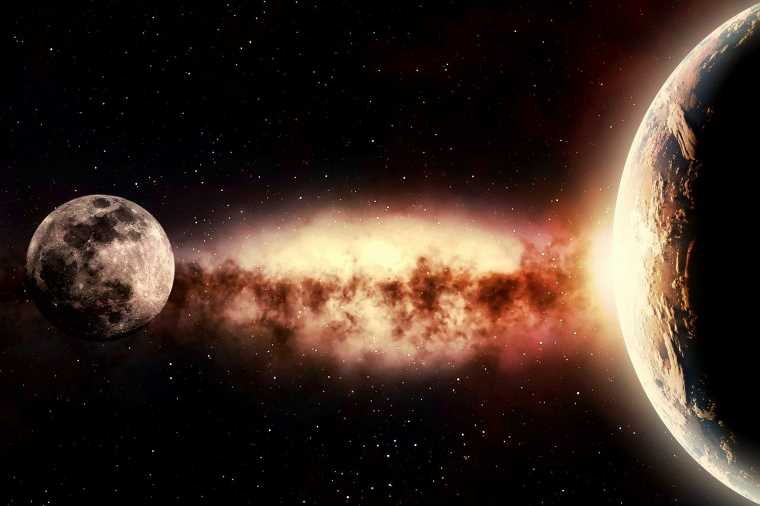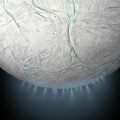A team of astronomers from the University of Cambridge who study the interactions between galaxies say that the mystery of dark energy could potentially be solved by studying the Andromeda galaxy, the closest cosmological neighbor to our own Milky Way galaxy.
Previous attempts to understand the nature of dark energy and its cohort dark matter, two invisible forces that make up approximately 95% of the entire universe, have come up short. But, the researchers behind this latest proposal say the unique nature and vicinity of Andromeda may hold the key to finally unlocking this mystery once and for all.
Quantifying Dark Energy and Dark Matter
When Albert Einstein laid out General Relativity, he set the value for what he suspected was the essentially neutral background energy of the universe at zero. Often referred to as the cosmological constant, this value changed dramatically when astronomers first calculated the fact that the universe was not only expanding but that expansion was accelerating.
Today, the accepted models of the universe have recalculated Einstein’s cosmological constant to include these expansion effects and attribute them to the forces of dark matter and dark energy. In fact, experts currently estimate that the entire visible universe of stars, planets, moons, meteors, etcetera constitutes a mere 5% of the matter in the cosmos and that the rest is split between the attracting force of dark matter (27%) and the repelling force of dark energy (68%). Since there is more of the latter, the net effect is an increasingly expanding universe.
“Dark energy is a general name for a family of models you could add to Einstein’s theory of gravity,” explained Dr. David Benisty from the Cambridge Department of Applied Mathematics and Theoretical Physics and the first author of this latest paper. “The simplest version of this is known as the cosmological constant: a constant energy density that pushes galaxies away from each other.”
Unfortunately, the only reliable detections of dark energy have come from measuring the movements of distant galaxies and trying to infer the effects of dark matter on those movements. So, the subjects are not only far away, but they are all moving away from each other, complicating estimates.
Now, Benisty and his team say they have a potential solution to reliably measuring the effects and, therefore, possibly understanding the nature of dark energy. And, they say, the key is right next door, cosmologically speaking.
The Andromeda Galaxy and The Milky Way Galaxy Are Destined to Become One
The current and measurable motions of the Milky Way and Andromeda Galaxies have revealed that they are on a collision course sometime millions of years from now. However, it is the very fact that they are moving towards each other and not away that gave Benisty and his team their idea.
“Andromeda is the only galaxy that isn’t running away from us,” said Benisty, who is also a Research Associate at Queens’ College, “so by studying its mass and movement, we may be able to make some determinations about the cosmological constant and dark energy.”
The team, which, along with Benisty, included Professor Anne Davis from DAMTP and Professor Wyn Evans from the Institute of Astronomy, says they have published their calculations in the Astrophysical Journal Letters, which revealed some exciting clues in their first simulations.
“Dark energy affects every pair of galaxies: gravity wants to pull galaxies together, while dark energy pushes them apart,” said Benisty. “In our model, if we change the value of the cosmological constant, we can see how that changes the orbit of the two galaxies. Based on their mass, we can place an upper bound on the cosmological constant, which is about five times higher than we can measure from the rest of the universe.”
Finding that upper limit could prove particularly valuable to researchers who are trying to quantify the very nature of dark energy as well as its effects on normal matter.
More Simulations and a Road Map to Solving the Dark Energy Mystery
While working with the best currently available data on Andromeda, the researchers say even better information is expected from the James Webb Space Telescope (JWST). Those new measurements, they say, could provide more accurate figures for the mass and motion of Andromeda, “which could help reduce the upper bounds of the cosmological constant” even further.
Moving forward, the researchers say their method could also be applied to measuring the movements of other galaxy pairs. And by comparing that data to the measurements and models of the Milky Way and Andromeda pairing, they may finally unlock dark energy’s secrets.
“Dark energy is one of the biggest puzzles in cosmology,” said Benisty. “It could be that its effects vary over distance and time, but we hope this technique could help unravel the mystery.”
Christopher Plain is a Science Fiction and Fantasy novelist and Head Science Writer at The Debrief. Follow and connect with him on X, learn about his books at plainfiction.com, or email him directly at christopher@thedebrief.org.

